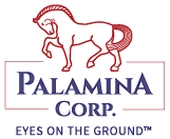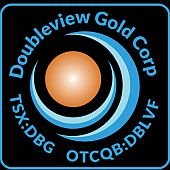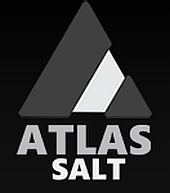 GMV Minerals identifies new gold target at Arizona
GMV Minerals identifies new gold target at Arizona
GMV MINERALS INC. DISCOVERS AND INTENDS TO DRILL A NEW EPITHERMAL TARGET ON ITS ARIZONA GOLD PROPERTY
GMV Minerals Inc. has discovered new drill targets within the central portion of its Arizona property. A new target, known as the Hernandez Hill, is located approximately 500 metres northeast of the existing Mexican Hat gold resource, and is defined by geology and soil geochemistry. Currently, GMV is conducting a 14-hole drill program to expand the known inferred mineral resource of 23,452,000 tonnes hosting 531,400 troy ounces of gold.
Based on soil geochemistry and recent mapping, it is believed that the Hernandez Hill target may be the top of an epithermal precious metal deposit. The distribution of anomalous pathfinder elements is characteristic of the upper levels of gold- and silver-bearing epithermal systems that are common in the Basin and Range of southwestern United States. This is a new deposit style at Mexican Hat and represents a strong and compelling drill target. Drill permits for the Hernandez Hill area have now been submitted. The company is excited about this new discovery, and intends to drill the target in January, 2017, using a diamond drill rig.
This target has been identified as a result of a comprehensive soil geochemistry sampling survey designed to test areas covered with quaternary sand deposits outboard from Mexican Hat hill, all of which have some component of colluvial and alluvial material. In general, the eastern margins of the Mexican Hat deposit are well defined, with fluvial and alluvial dispersion of most elements persisting for kilometres to the limits of the survey to the east. An unexpected and coincident mercury, antimony and arsenic anomaly with anomalous gold values was identified at the northeastern portion of the survey.
The anomalous area contains two topographic highs that constrain the derivation of these soils and which include areas of outcrop exposure, which is otherwise rare away from Mexican Hat hill itself. The topographic highs are underlain by a well-fractured andesite that is silicified with chalcedony and opaline quartz. The andesite is overlain by a fiamme-bearing rhyolite ash tuff that is microfractured and silicified. Carbonate, which is ubiquitous at Mexican Hat, is noticeably rare within this silicified zone. Over all, the silicified rocks cover an area greater than 600 metres long, open to the northeast and at least 500 metres wide. Quaternary cover limits estimates of the total extent of this anomaly to the north and east. The soil sampling program is being expanded to the north to provide better coverage of this target, and a lithogeochemical program of the silicified region will be completed in the next two weeks.
Ian Klassen, GMV’s chief executive officer, stated: “We’re quite surprised by this discovery. The combination of a strong pathfinder geochemical signature, including gold, and a broad area of silicification and alteration is a classic epithermal target. Areas of chalcedonic and opaline quartz and silica flooding are commonly found near the top of epithermal systems that my contain economic concentrations of gold and silver. There is no record of this area of the Mexican Hat property receiving meaningful exploration in the past. This is the sort of target that would have been drilled decades ago had it been found in one of Nevada’s or Arizona’s better-known gold belts. Management views this as a potentially game-changing target, and we’ve submitted permits so we can drill test it as soon as possible using a core rig. This testing is in addition to the ongoing reverse circulation drill program that is ongoing to expand the current Mexican Hat resource.”
The soil geochemical survey was completed in November and encompassed a total of 663 samples that were collected from 19 lines spaced 100 metres apart east of the known mineralization. Quality assurance/quality control included the insertion of 78 certified standards and blanks, all under the supervision of Brian Malahoff, PGeol. Samples were collected in industry-standard methods, dried at 60 degrees and sieved up to 100 grams to minus 180 microns (80 mesh) up to one-kilogram samples (analytical code: SS80). The samples were analyzed by an ultratrace analysis, aqua regia digestion with ICP-MS finish for 37-element package (analytical code: AQ250). The company has posted the soil results on its new website.
Dr. D.R. Webb, BASc, MSc, PhD, PGeo, and Mr. Malahoff are joint qualified persons for this release within the meaning of National Instrument 43-101. Both have reviewed the technical content of this release and have approved its content.
About GMV Minerals Inc.
GMV is focused on developing precious metal assets in Arizona. GMV, through its 100-per-cent-owned subsidiary, has a 100-per-cent interest in a mining property lease commonly referred to as the Mexican Hat project, located in Cochise county, Arizona. The Mexican Hat property contains an inferred mineral resource of 23,452,000 tonnes grading 0.7 gram per tonne gold hosting 531,400 troy ounces of gold. The project was initially explored by Placer Dome (U.S.) in the late 1980s to early 1990s. GMV is focused on developing the asset and realizing the full mineral potential of the property through near-term gold production.
https://www.gmvminerals.com/news/2016/
































